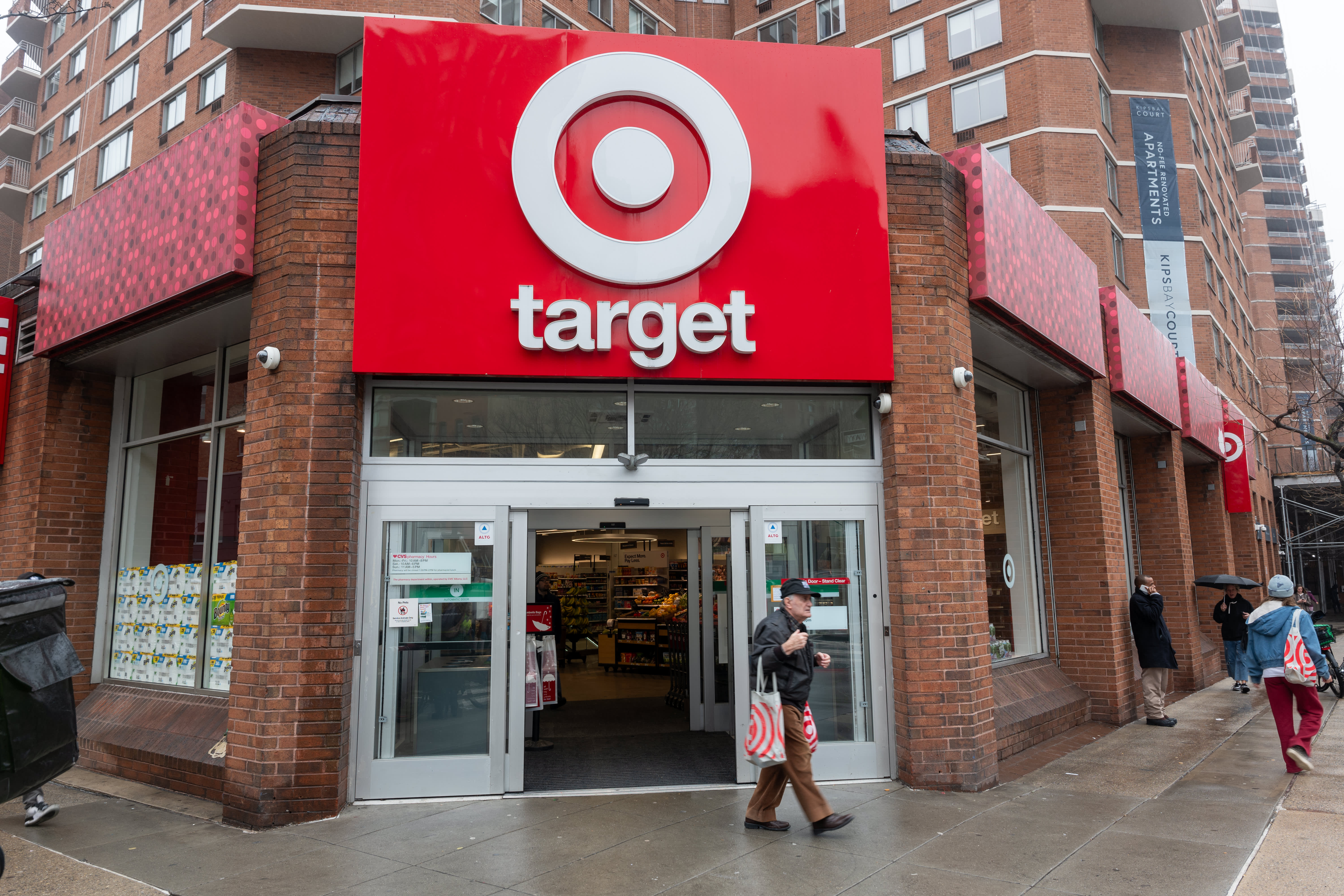
Target said Wednesday that sales grew about 3% in its fiscal second quarter, a return to growth after a prolonged stretch of sluggish sales and squeezed profits.
The discounter beat Wall Street’s earnings and revenue expectations, as shoppers made more visits to Target’s stores and website, and bought more discretionary items like clothing.
Even so, the company stuck by its previous full-year sales forecast and struck a cautious note. Target said it expects comparable sales for the full year to range from flat to up 2%, but said it now expects the increase will likely be in the lower half of the range.
Target raised its profit guidance, however, saying it expects adjusted earnings per share to range from $9 to $9.70, up from the previous range of $8.60 and $9.60.
The company’s shares rose more than 10% in premarket trading as Target showed improvement in generating profits.
On a call with reporters, Chief Operating Officer Michael Fiddelke said Target took a “measured approach” with its outlook because it’s hard to predict consumers’ mindsets and the state of the economy in the coming months.
“While we’ve been pleased with our performance so far this year, and our view of the consumer remains largely the same, the range of possibilities and the macroeconomic backdrop in consumer data and in our business remains unusually high,” he said.
Here’s what Target reported for the three-month period that ended Aug. 3 compared with what Wall Street expected, based on a survey of analysts by LSEG:
- Earnings per share: $2.57 vs. $2.18 expected
- Revenue: $25.45 billion vs. $25.21 billion expected
Target, known for its wide array of trendy but low-priced merchandise, has been hurt as consumers buy fewer items like new outfits or home decor while they pay more for everyday expenses like food and housing. The big-box retailer has also struggled with reduced profits in recent quarters, as customers purchased items like groceries that tend to be lower margin, and losses from damaged inventory and theft, including organized retail crime, took a toll.
Those trends improved in the second quarter, as Target attracted shoppers with new merchandise and reduced prices.
Target’s net income jumped to $1.19 billion, or $2.57 per share, from $835 million, or $1.80 per share, in the year-ago quarter. That’s a more than 40% year-over-year increase.
Total revenue rose from $24.77 billion in the prior year.
Comparable sales climbed 2% in the quarter, the first time in five quarters that Target posted a gain. The industry metric tracks sales online and at stores open at least 13 months.
Digital sales drove most of those gains, growing 8.7% in the quarter, as more customers used same-day services like curbside pickup and home delivery. Comparable store sales rose slightly, up 0.7%.
Target has tried to rev up sales and drive higher foot traffic by deepening loyalty and offering discounts. The company relaunched its loyalty program early this year and introduced a new paid membership, Target Circle 360, that includes perks like free same-day deliveries. Target threw its own sales event in July to compete with Amazon’s Prime Day. And it announced in May that it would cut prices on about 5,000 frequently bought items, including diapers, milk and paper towels.
CEO Brian Cornell said customers have responded well to the price reductions and credited them for contributing to traffic growth in the quarter.
Customer traffic across Target’s website and store grew 3% in the second quarter compared with the year-ago period. The average size of customers’ shopping baskets, however, declined slightly, Fiddelke said.
Discretionary sales, which have been under pressure across the retail industry, improved. Target said apparel sales, for instance, grew more than 3% in the quarter compared with the year-ago period.
Back-to-school has also been an important season for the retailer. Chief Commercial Officer Rick Gomez said on the call with reporters that the shopping season has matched Target’s expectations, as many customers gravitate toward items with good value like backpacks that cost $5 and crayons that cost 25 cents.
He said back-to-college shopping tends to be a longer season, as students gradually decorate their apartments and dorms.
Shares of Target closed Tuesday at $143.21 after accounting for a dividend payment. As of Tuesday’s close, the company’s stock is up about 1% so far this year. That’s trailed behind the S&P 500’s approximately 17% gains during the same period.
